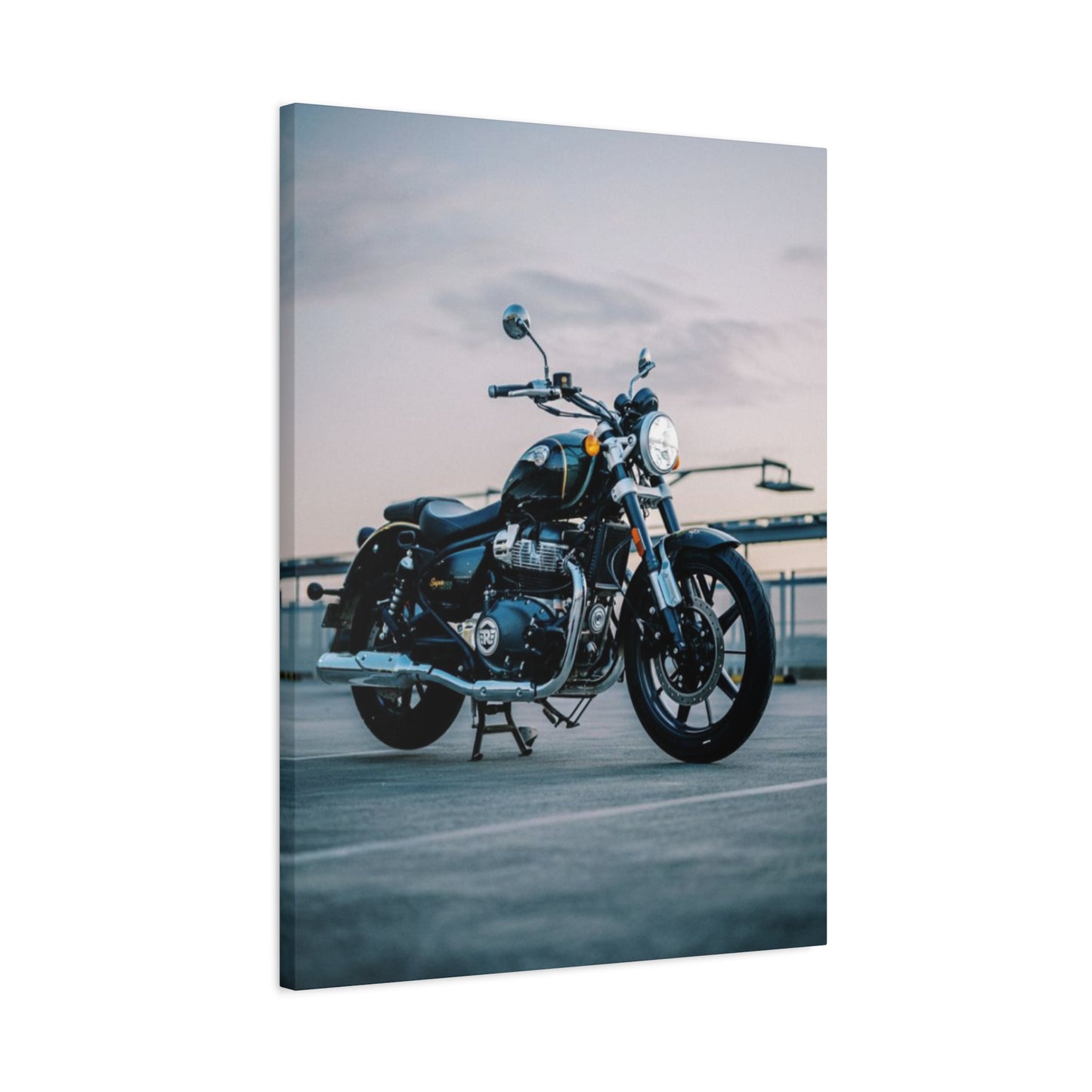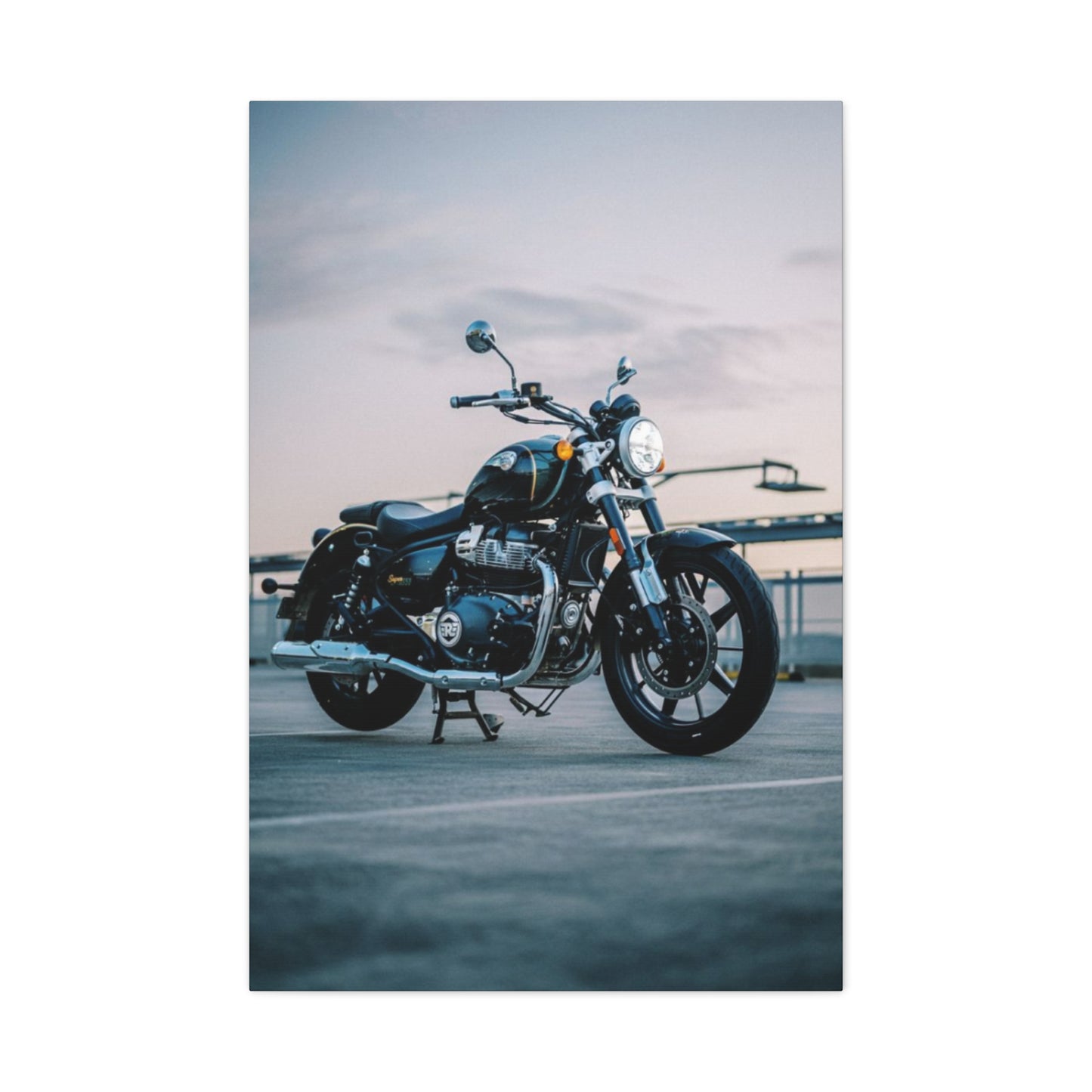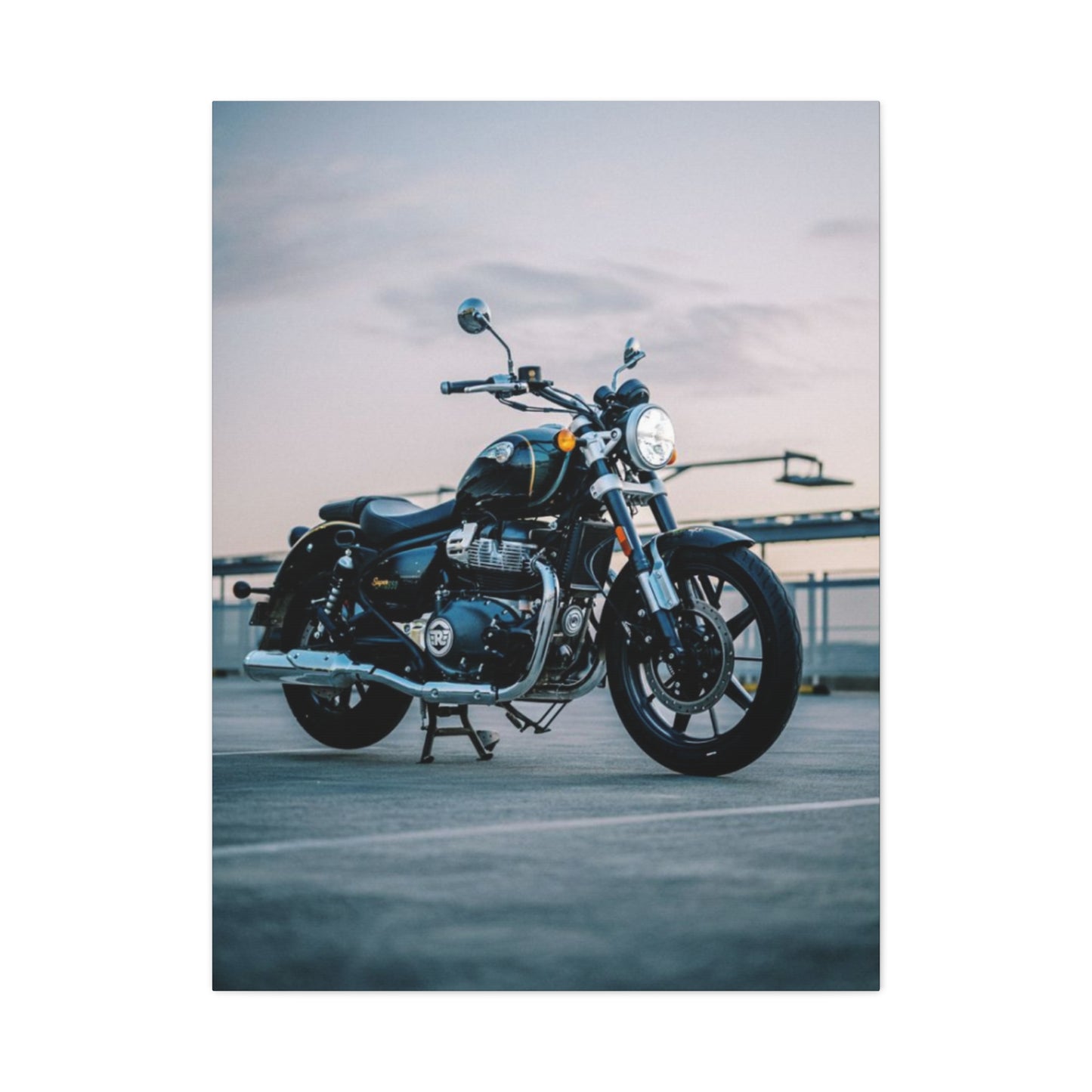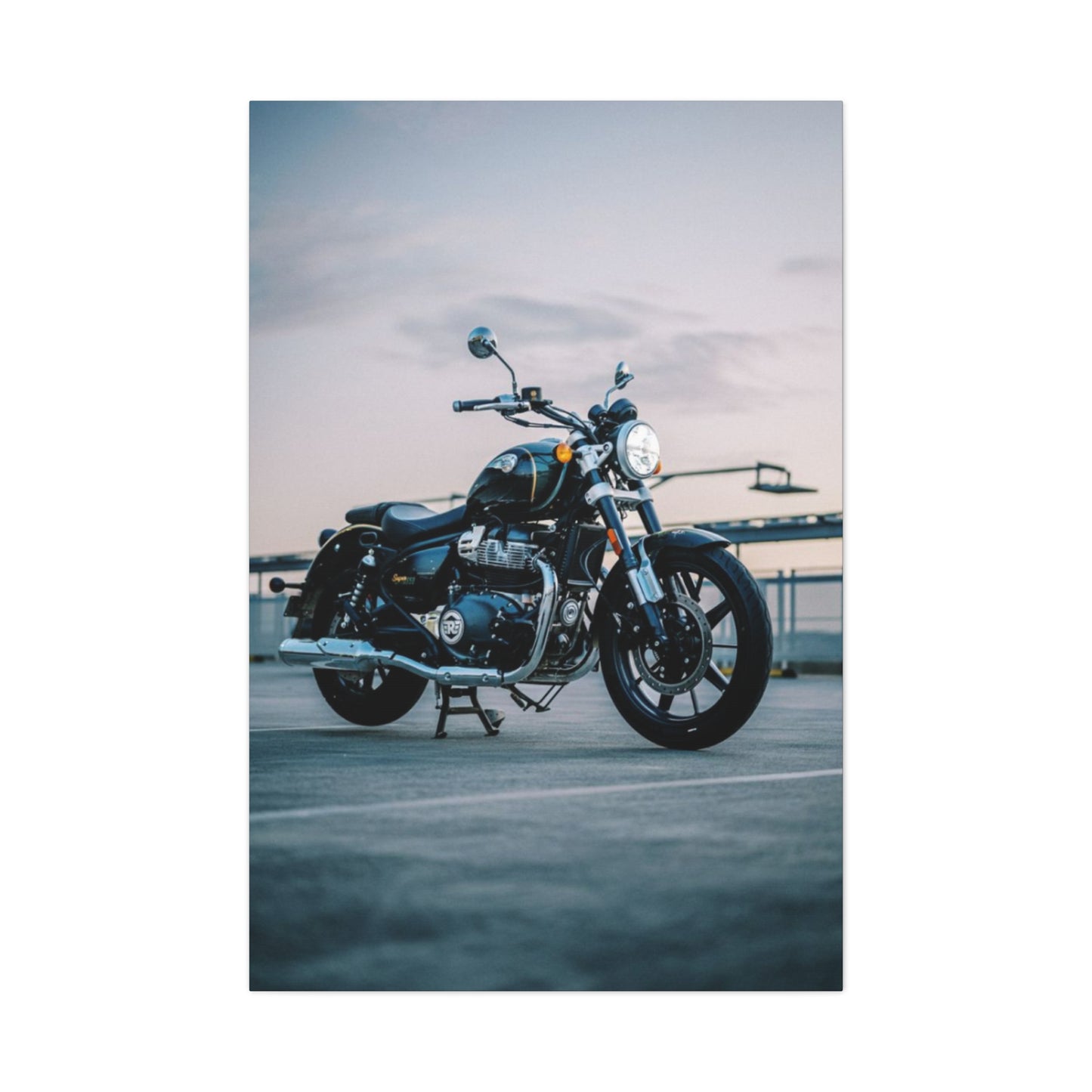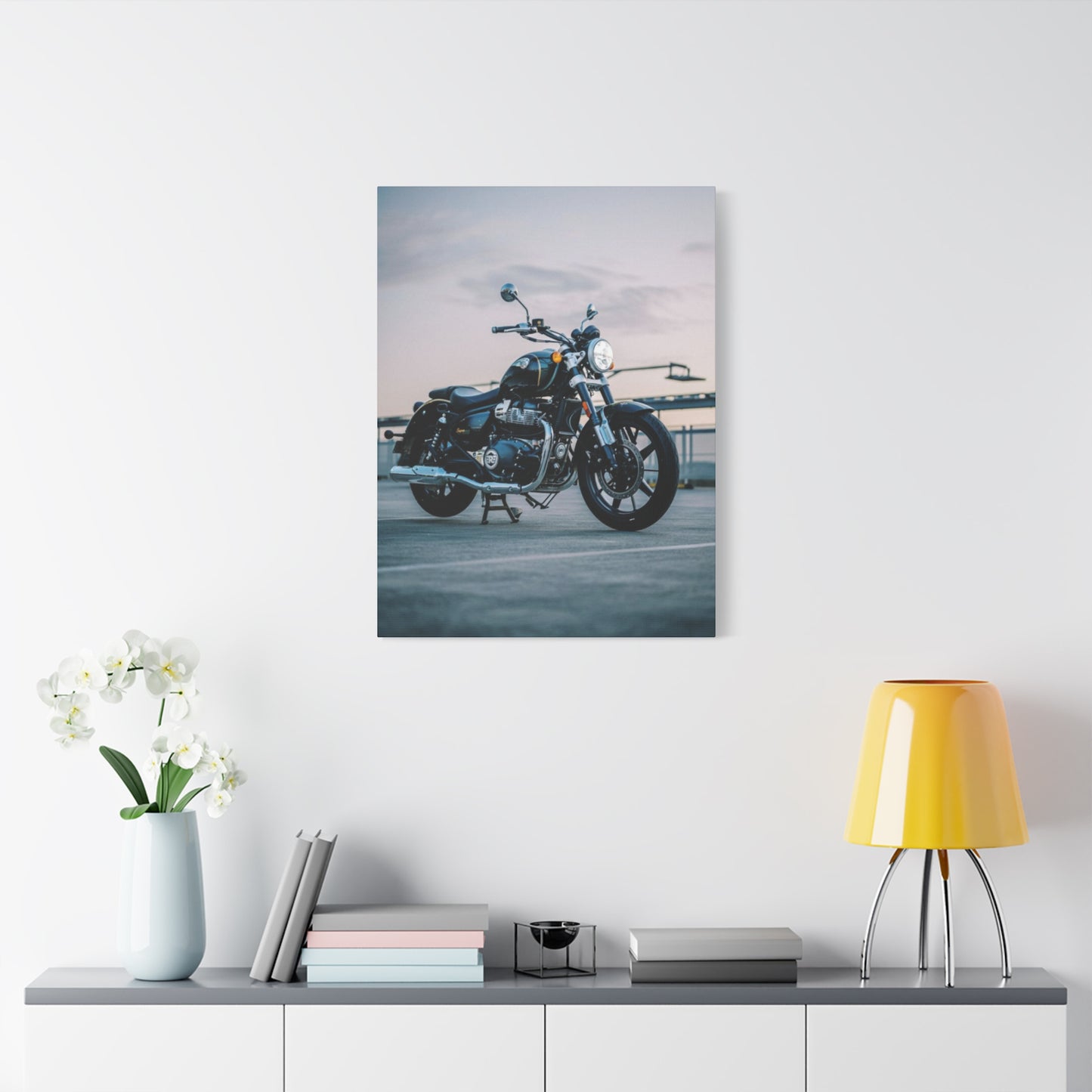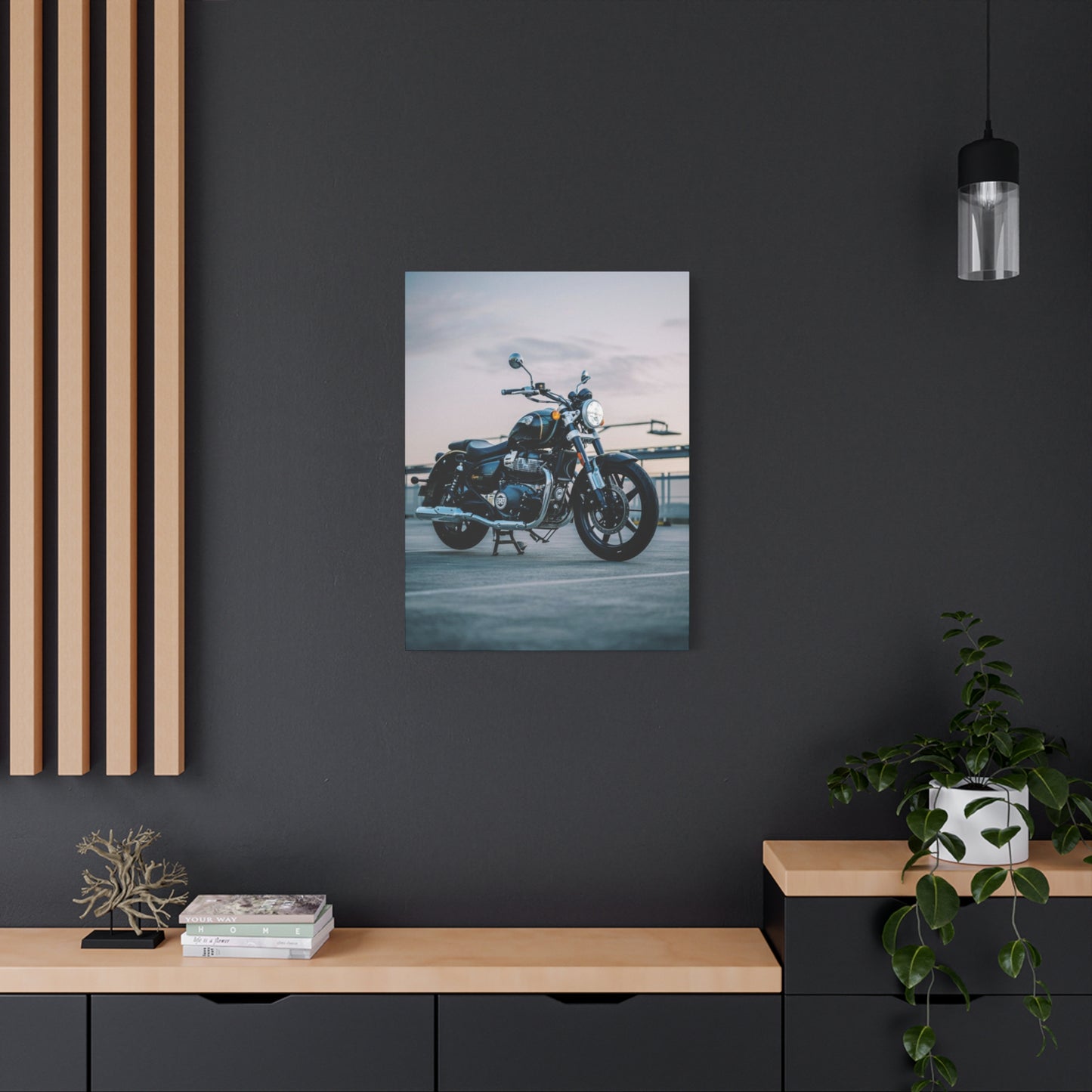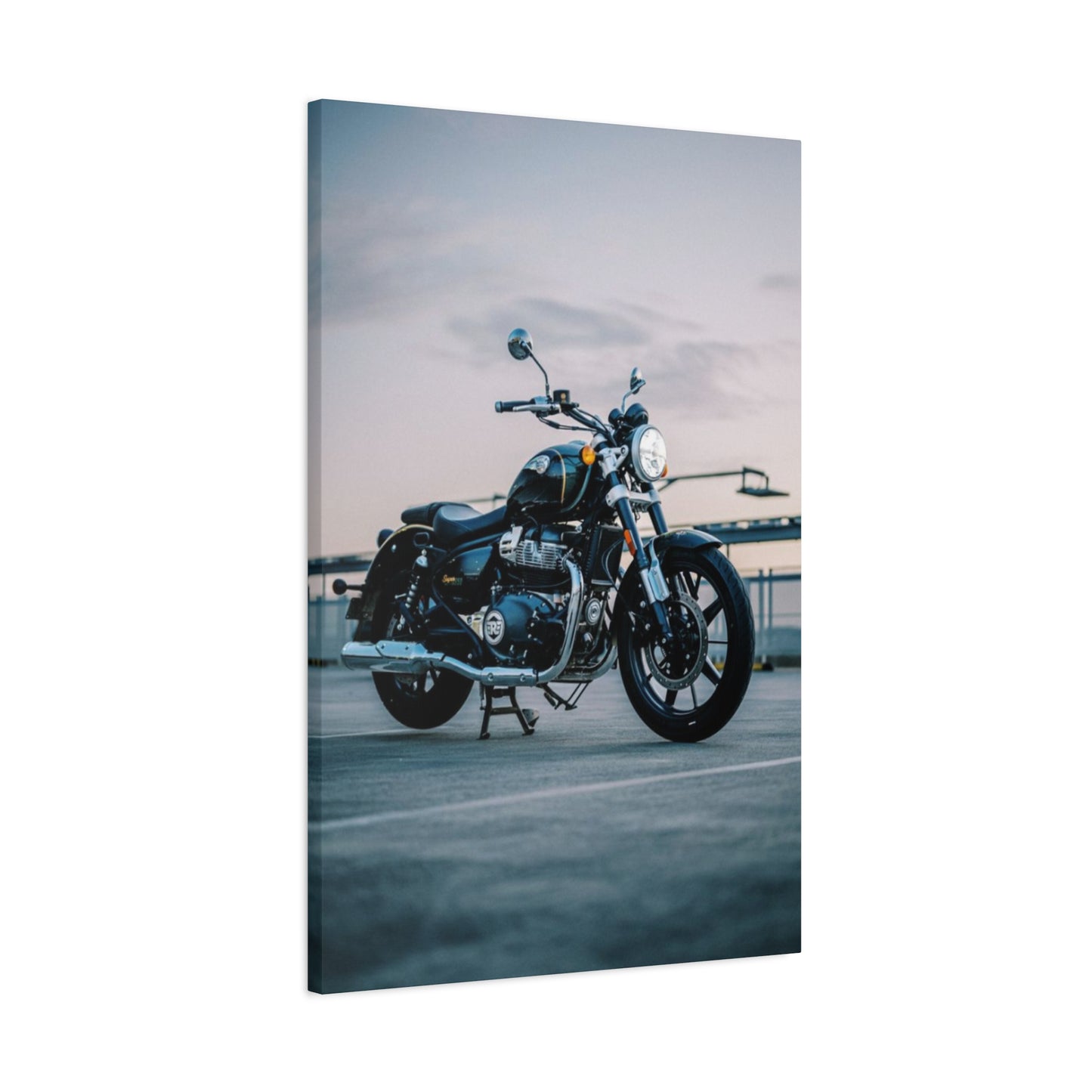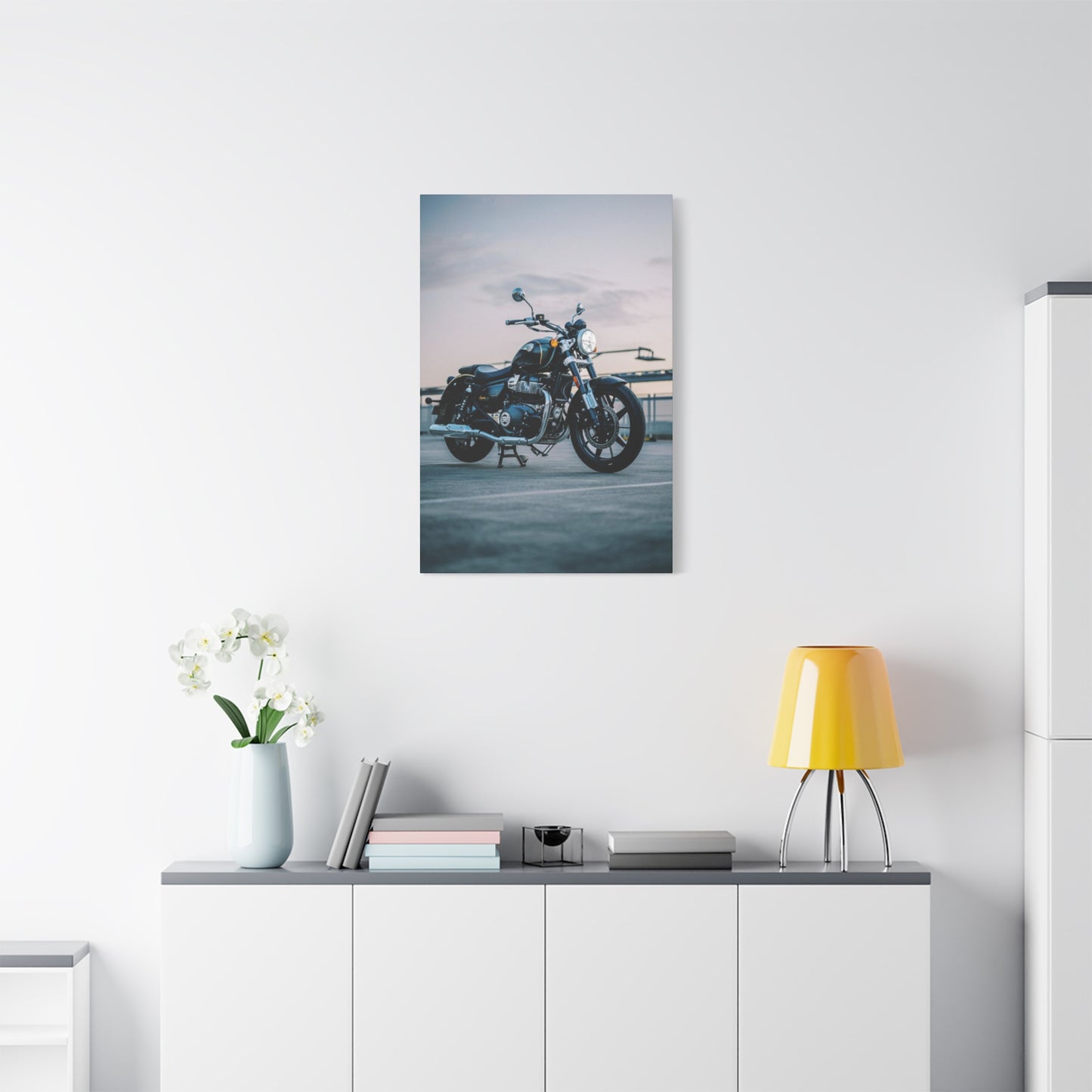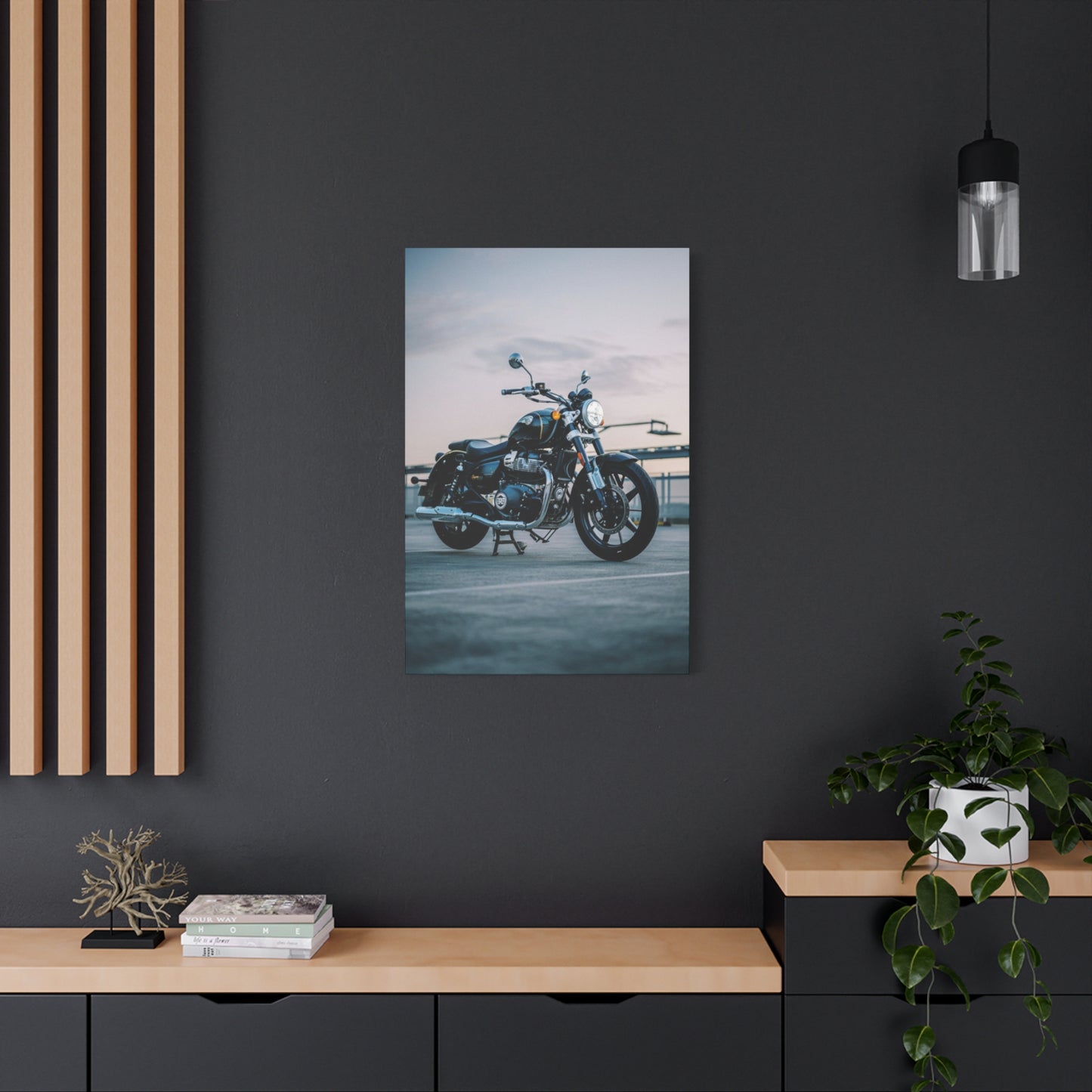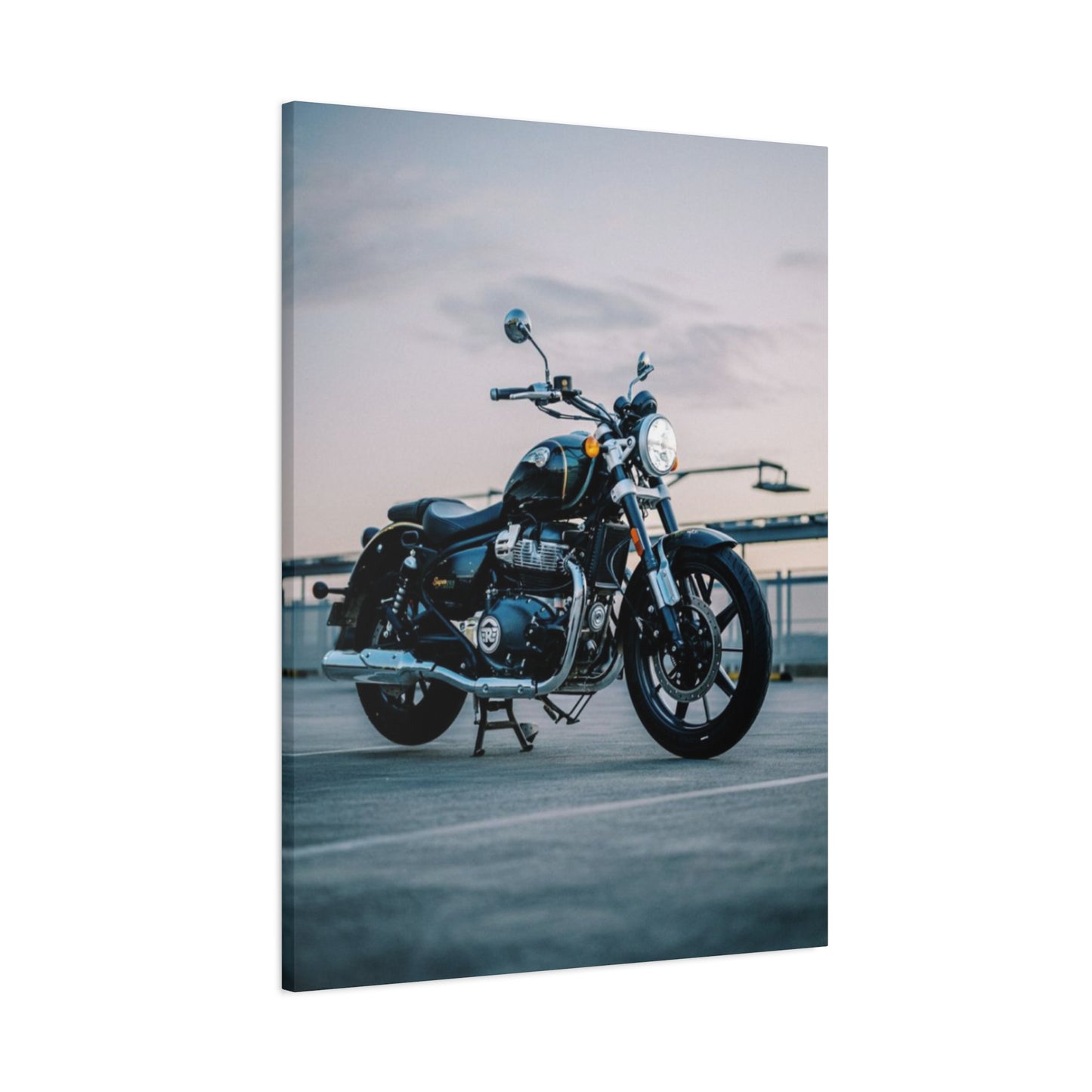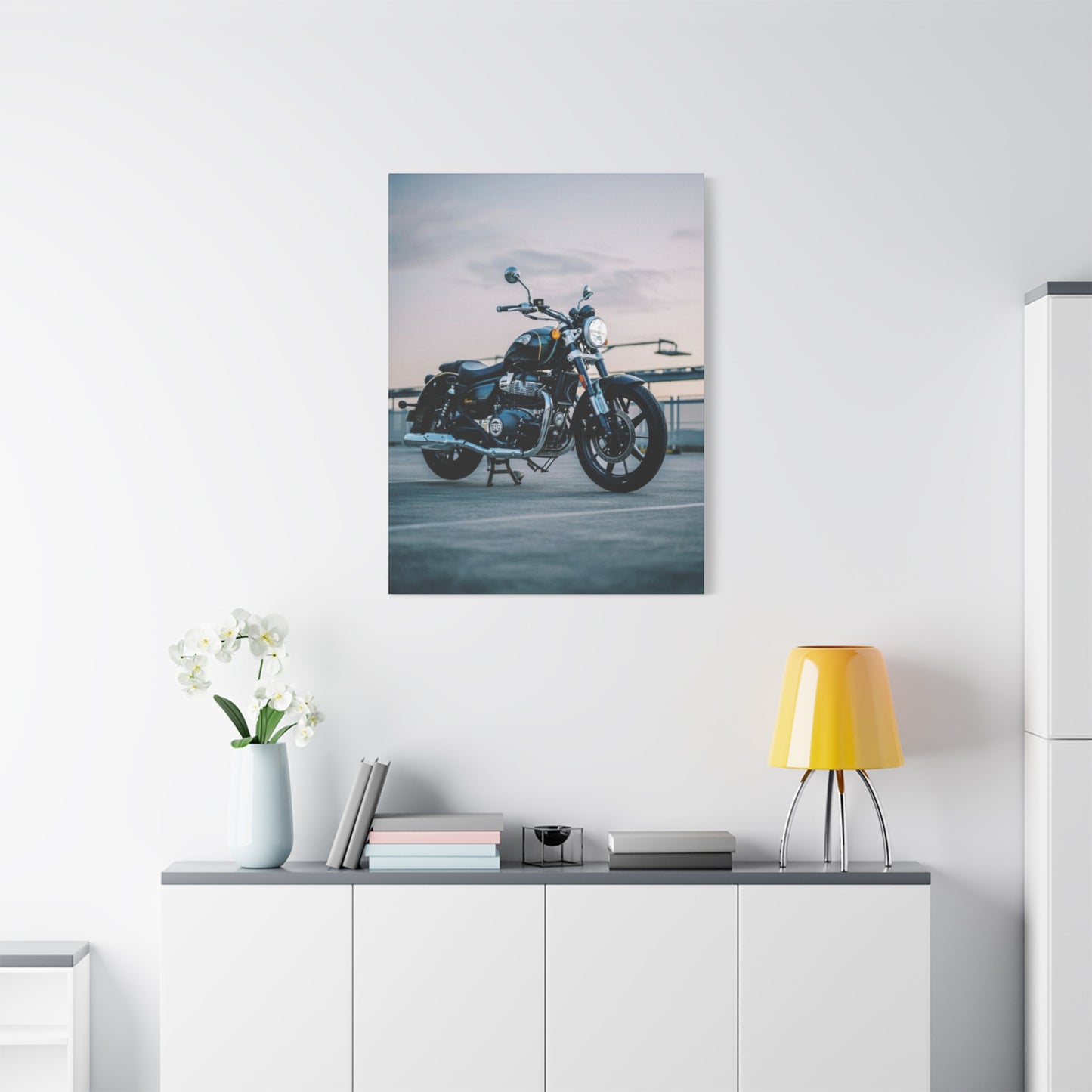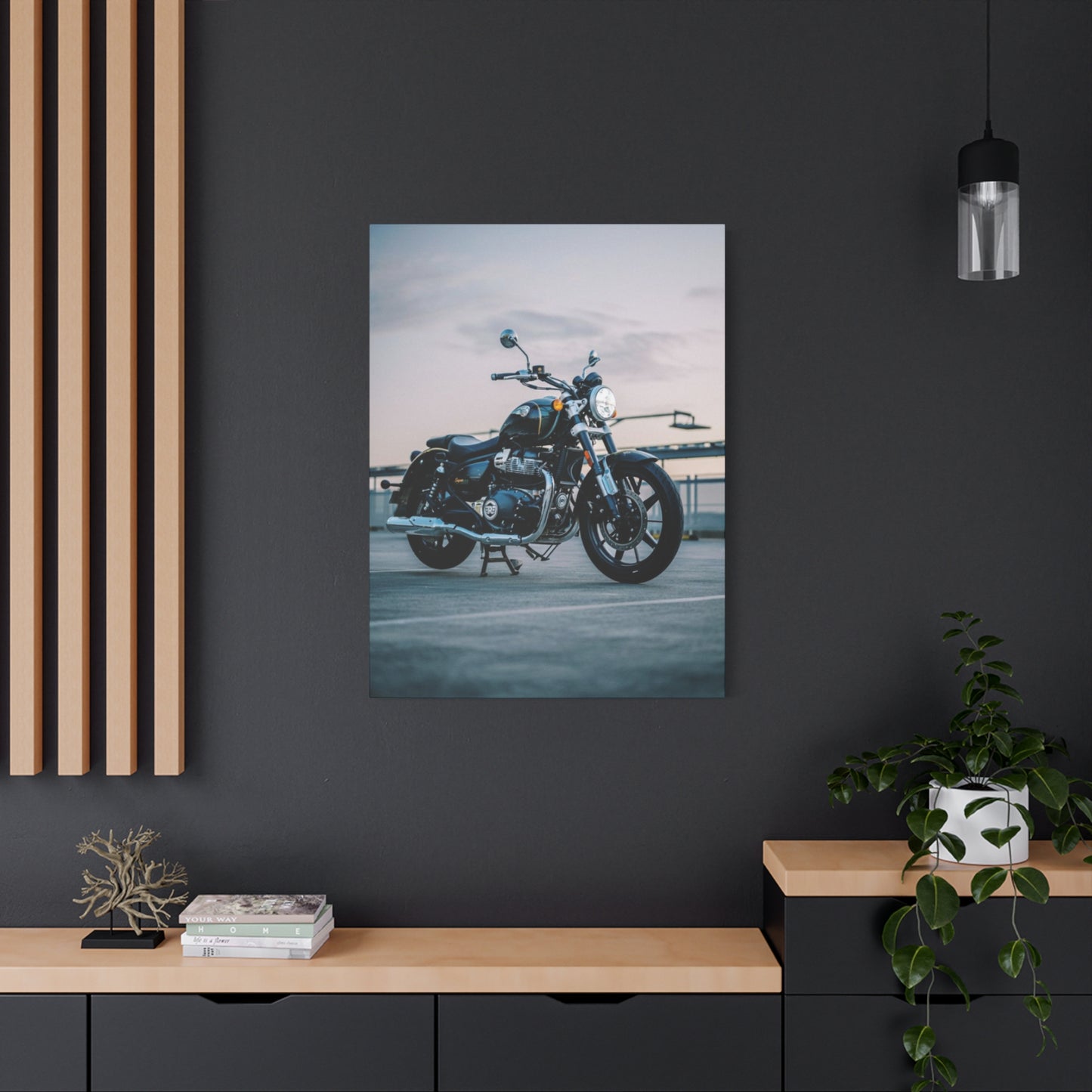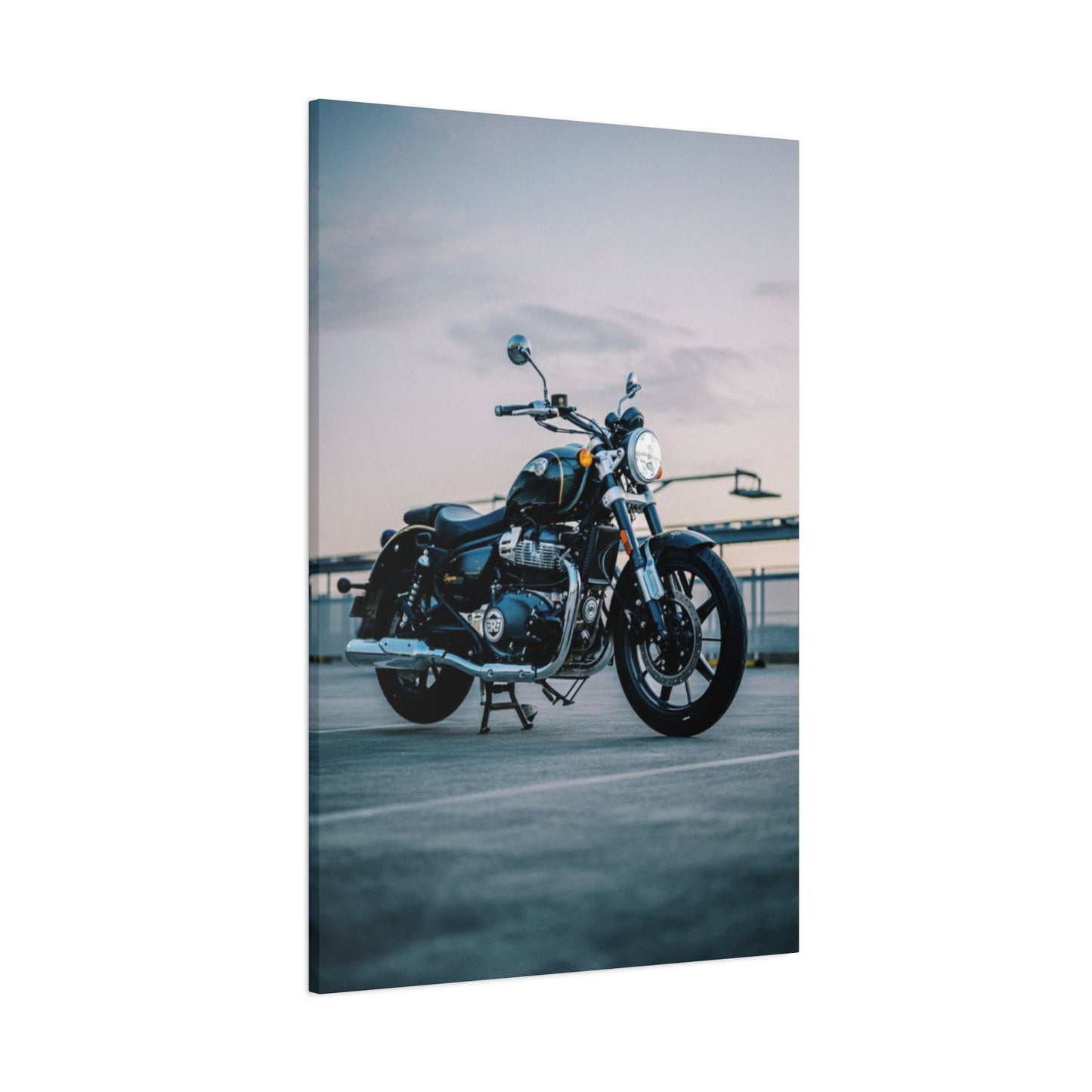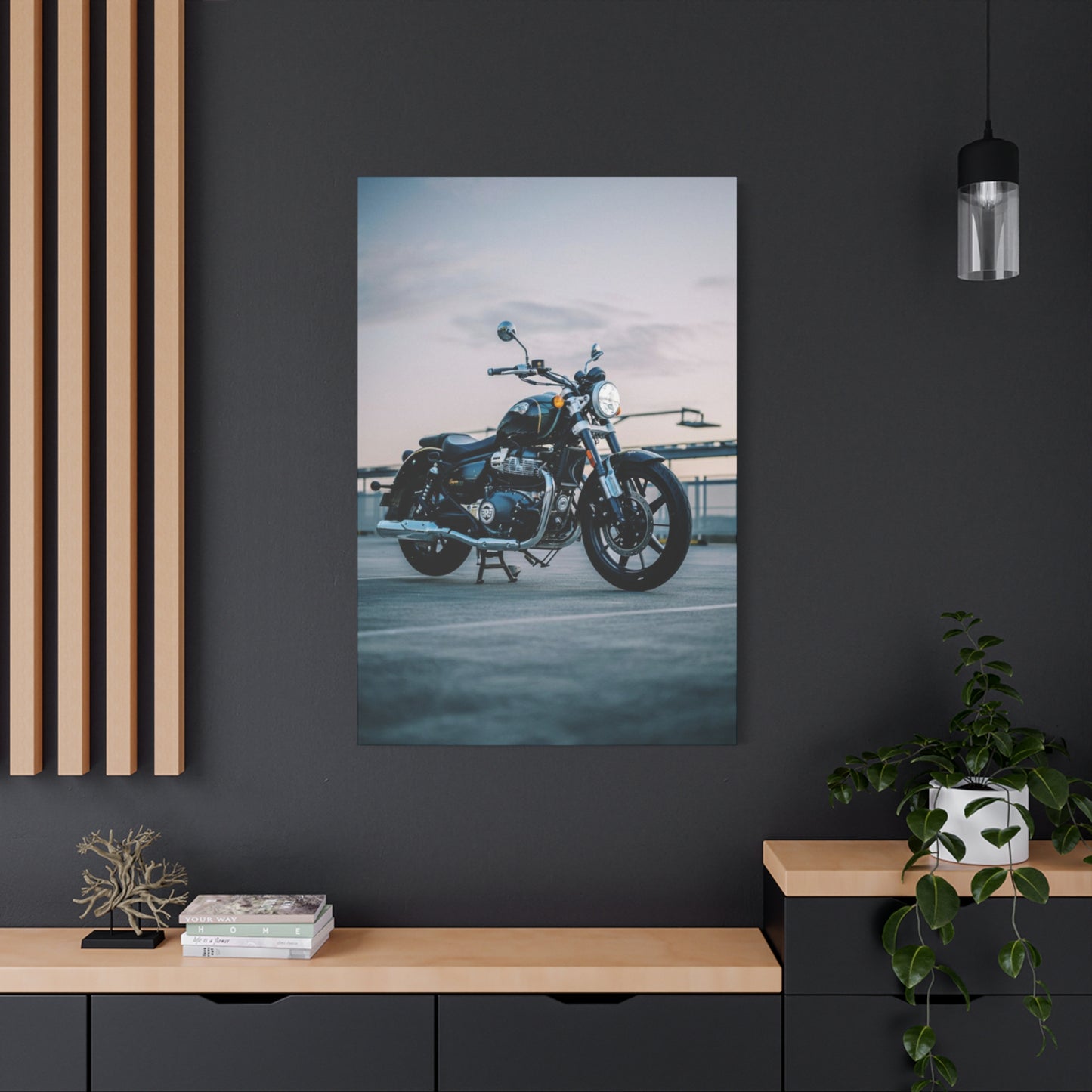Retro Indian Motorcycle Wall Art: Timeless Vintage Bike Decor
The fascination with vintage Indian motorcycles has transcended generations, creating a cultural phenomenon that continues to captivate enthusiasts worldwide. These magnificent machines represent more than mere transportation; they embody freedom, craftsmanship, and American ingenuity. Today, this passion extends beyond owning the actual motorcycles to celebrating their legacy through stunning visual representations that transform living environments into galleries of mechanical artistry.
Retro Indian motorcycle art serves as a bridge between past and present, allowing admirers to bring the essence of these legendary bikes into their daily lives. Whether you're a dedicated collector, casual enthusiast, or someone who simply appreciates the aesthetic beauty of vintage machinery, incorporating these artistic elements into your environment creates an atmosphere that speaks to adventure and timeless design.
History and Legacy of Indian Motorcycle Artwork
The story of Indian Motorcycle begins in 1901 when George Hendee and Oscar Hedstrom founded the Hendee Manufacturing Company in Springfield, Massachusetts. From its inception, Indian Motorcycle established itself as a pioneer in motorcycle manufacturing, producing machines that were not only functional but also visually striking. The company's commitment to both performance and aesthetics laid the groundwork for what would become an enduring artistic legacy.
During the golden era of American motorcycle manufacturing, Indian bikes were celebrated for their distinctive styling, innovative engineering, and racing prowess. The iconic "Indian head" logo, inspired by Native American imagery, became one of the most recognizable symbols in motorcycle history. This powerful branding, combined with the bikes' distinctive silhouettes and mechanical details, provided rich source material for artists and designers who began creating visual tributes to these remarkable machines.
The artistic representation of Indian motorcycles gained momentum during the mid-20th century when motorcycle culture began to influence broader American society. Artists started capturing the essence of these bikes through various mediums, from technical drawings and advertising materials to fine art paintings and photography. These early artistic interpretations established the foundation for today's thriving market of retro Indian motorcycle artwork.
The resurgence of interest in vintage motorcycles during the 1970s and 1980s brought renewed attention to Indian motorcycle art. Collectors began seeking out original advertising materials, technical drawings, and promotional photographs from the company's heyday. This demand created a market for reproduction prints and inspired contemporary artists to create new works that captured the spirit of the original machines while appealing to modern sensibilities.
Classic Indian Bike Prints and Their Evolution
The evolution of classic Indian bike prints reflects broader changes in printing technology, artistic styles, and consumer preferences. Early promotional materials from the Indian Motorcycle Company featured detailed technical illustrations that emphasized the mechanical sophistication of their machines. These technical drawings, often rendered in precise black and white line work, became some of the most sought-after pieces in the vintage motorcycle art market.
As lithography and later photographic printing techniques improved, Indian motorcycle advertisements began incorporating more sophisticated visual elements. Color photography allowed for more dynamic representations of the bikes, showing them in action or beautifully staged environments. These promotional photographs became iconic images that continue to influence contemporary artists working in the medium.
The mid-century period saw the emergence of stylized poster art featuring Indian motorcycles. These pieces often incorporated elements of Art Deco and modernist design, presenting the bikes as symbols of speed, power, and technological advancement. The bold graphics and striking color schemes of these posters made them popular not only as promotional materials but also as decorative elements for homes and businesses.
Contemporary classic Indian bike prints draw inspiration from all these historical sources while incorporating modern design sensibilities and printing techniques. Today's artists and publishers create pieces that range from faithful reproductions of vintage materials to completely original interpretations that capture the essence of Indian motorcycles through contemporary artistic lenses.
Digital printing technology has revolutionized the production and distribution of classic Indian bike prints. High-resolution scanning and printing capabilities allow for the creation of museum-quality reproductions that preserve the finest details of original artworks and photographs. This technological advancement has made high-quality Indian motorcycle art more accessible to collectors and enthusiasts worldwide.
The variety of available print styles continues to expand, offering options for every taste and budget. From limited edition fine art prints produced on archival papers to affordable poster reproductions suitable for casual display, the market accommodates collectors at all levels. Specialty printing techniques such as giclee printing, screen printing, and letterpress production create unique textures and visual qualities that enhance the artistic appeal of these pieces.
Vintage Indian Decor Elements and Design Integration
Incorporating vintage Indian decor elements into contemporary living environments requires careful consideration of color schemes, furniture selection, and overall design harmony. The rich visual vocabulary of Indian motorcycle culture provides numerous opportunities for creating cohesive decorative themes that celebrate the brand's heritage while maintaining modern comfort and functionality.
The color palette associated with vintage Indian motorcycles typically includes deep reds, warm blacks, chrome silver, and cream tones. These colors can serve as the foundation for a broader decorative scheme that incorporates other vintage automotive elements or stands alone as a focused tribute to Indian motorcycle heritage. Understanding how these colors interact with different lighting conditions and architectural features helps create environments that showcase the artwork to best advantage.
Furniture selection plays a crucial role in supporting vintage Indian decor themes. Industrial-style pieces crafted from metal and leather complement the mechanical aesthetic of motorcycle culture. Vintage shop stools, metal lockers repurposed as storage units, and leather seating reminiscent of motorcycle saddles create authentic environments that enhance the impact of the artwork.
Lighting design significantly impacts the presentation of vintage Indian decor elements. Industrial-style fixtures, including pendant lights with metal shades and exposed Edison bulbs, create atmospheric lighting that complements the mechanical aesthetic. Track lighting systems allow for flexible illumination of artwork while maintaining the overall ambiance of the environment.
Textile selection offers opportunities to reinforce the vintage motorcycle theme through subtle incorporation of related materials and patterns. Leather accents, canvas fabrics, and materials that reference motorcycle gear can tie the decorative scheme together without overwhelming the primary focus on the artwork itself. The key lies in achieving balance between thematic consistency and visual sophistication.
Architectural elements can be modified or highlighted to support vintage Indian decor themes. Exposed brick walls provide ideal backgrounds for motorcycle artwork, while industrial-style window treatments and metal fixtures can reinforce the mechanical aesthetic. Even in contemporary homes, small modifications can create authentic vintage atmospheres that showcase Indian motorcycle art to maximum effect.
Indian Motorcycle Posters Through the Decades
The evolution of Indian motorcycle posters reflects changing artistic styles, marketing approaches, and cultural attitudes toward motorcycle riding. From the earliest promotional materials of the 1900s to contemporary artistic interpretations, these posters document not only the development of Indian motorcycles but also the broader cultural impact of motorcycle riding in American society.
Early Indian motorcycle posters emphasized technical sophistication and reliability. These promotional materials often featured detailed illustrations of the machines accompanied by text highlighting their innovative features and superior performance. The artistic style reflected the technical drawing traditions of the period, with precise line work and careful attention to mechanical details creating images that appealed to technically-minded consumers.
The 1920s and 1930s brought significant changes to Indian motorcycle poster design as Art Deco influences began to shape commercial graphics. Posters from this period featured bold geometric patterns, stylized typography, and dynamic compositions that suggested speed and movement. The integration of Art Deco elements created visually striking promotional materials that appealed to consumers attracted to modern design aesthetics.
Post-World War II poster design reflected changing cultural attitudes toward motorcycle riding. The growing association between motorcycles and youth culture influenced artistic approaches, with posters beginning to emphasize lifestyle and attitude rather than purely technical features. Images of riders in action and scenic riding environments became more prominent in promotional materials.
The 1960s and 1970s saw the emergence of psychedelic and counterculture influences in motorcycle poster design. Artists working in these styles created Indian motorcycle posters that incorporated bold colors, surreal imagery, and experimental typography. These pieces reflected the broader cultural movements of the period while maintaining focus on the iconic visual elements of Indian motorcycles.
Contemporary Indian motorcycle posters draw from all these historical influences while incorporating modern design techniques and printing technologies. Digital art creation tools allow artists to experiment with styles and effects that would have been impossible in earlier eras, creating pieces that honor the heritage of Indian motorcycles while appealing to contemporary aesthetic sensibilities.
The market for Indian motorcycle posters continues to expand as new generations discover the appeal of vintage motorcycle culture. Limited edition art prints, reproduction vintage posters, and original contemporary works all find audiences among collectors and enthusiasts. The diversity of available styles ensures that there are options suitable for every taste and decorative context.
Retro Bike Art Ideas and Creative Applications
Developing retro bike art ideas requires understanding both the visual elements that define vintage motorcycle aesthetics and the contemporary design principles that make these elements relevant to modern audiences. The challenge lies in creating pieces that honor the heritage of Indian motorcycles while appealing to contemporary sensibilities and decorative preferences.
One approach to retro bike art involves reimagining classic Indian motorcycle imagery through contemporary artistic techniques. Digital manipulation of vintage photographs can create striking effects that enhance the dramatic impact of the original images while adding modern visual interest. Techniques such as selective colorization, texture overlays, and composite imaging create unique pieces that bridge past and present.
Abstract interpretations of Indian motorcycle forms offer opportunities for creating sophisticated artwork that captures the essence of these machines without literal representation. Artists working in this style focus on the flowing lines, mechanical rhythms, and dynamic proportions that characterize Indian motorcycles, translating these elements into purely artistic compositions that work well in contemporary environments.
Mixed media approaches combine photographic elements with hand-drawn or painted components to create textured, layered artworks that reflect the complexity and craftsmanship of vintage motorcycles. These pieces often incorporate elements such as technical drawings, period typography, and mechanical details to create rich visual experiences that reward close examination.
Typography-focused retro bike art emphasizes the graphic design elements associated with Indian motorcycle branding and advertising. Artists working in this style create pieces that celebrate the distinctive lettering, logos, and promotional graphics that defined the visual identity of the brand throughout its history. These works often function effectively as decorative elements while also serving as historical documentation.
Environmental integration represents another creative approach to retro bike art. Rather than creating traditional framed pieces, some artists develop installations or environmental modifications that transform entire rooms or buildings into celebrations of Indian motorcycle culture. These projects might include wall murals, custom lighting installations, or architectural modifications that create immersive experiences.
Interactive and multimedia retro bike art projects incorporate digital technologies to create dynamic presentations of Indian motorcycle imagery. These might include digital displays that cycle through historical photographs, interactive installations that respond to viewer presence, or augmented reality experiences that overlay historical information onto contemporary environments.
Indian Motorcycle Canvas Art Styles and Techniques
Canvas art provides an ideal medium for presenting Indian motorcycle imagery due to its versatility, durability, and visual impact. The texture and surface quality of canvas enhance the presentation of both photographic and painted motorcycle artwork, creating pieces that command attention while integrating well with various decorative schemes.
Photographic canvas prints represent one of the most popular approaches to Indian motorcycle canvas art. High-resolution digital printing on canvas substrates creates museum-quality reproductions of vintage photographs and contemporary motorcycle imagery. The canvas texture adds visual interest to photographic images while the stretched presentation format creates a substantial visual presence that works well in larger environments.
Painted canvas works offer opportunities for more interpretive approaches to Indian motorcycle subjects. Artists working in oils, acrylics, or mixed media can create pieces that capture not only the visual appearance of these machines but also their emotional impact and cultural significance. The painterly approach allows for expressive techniques that convey the passion and excitement associated with vintage motorcycle culture.
Abstract canvas interpretations focus on the formal elements of Indian motorcycle design rather than literal representation. These pieces might emphasize color relationships inspired by vintage paint schemes, compositional structures based on mechanical forms, or textural qualities that reference the materials and surfaces found on classic bikes. Abstract approaches create sophisticated artworks that complement contemporary environments while maintaining connections to motorcycle heritage.
Collage and mixed media canvas works incorporate multiple materials and imagery sources to create complex, layered compositions. These pieces might combine vintage photographs, technical drawings, period advertisements, and contemporary elements to create rich visual narratives that document the history and cultural impact of Indian motorcycles.
Screen printing and other specialized printing techniques create canvas works with unique visual and textural qualities. Limited edition screen prints on canvas offer collectors the appeal of original printmaking techniques combined with the substantial presentation format of canvas stretching. These pieces often feature bold graphics and distinctive color schemes that make strong visual statements.
Custom canvas commissioning allows collectors to obtain unique pieces tailored to their specific preferences and requirements. Artists working in this area can create personalized interpretations of Indian motorcycle themes that incorporate specific bikes, color schemes, or compositional preferences. Commissioned works offer the ultimate in customization while maintaining the quality and craftsmanship expected in fine art presentation.
Classic Bike Prints for Modern Environments
Integrating classic bike prints into modern environments requires careful consideration of scale, placement, and surrounding design elements. The goal is to create presentations that honor the heritage of Indian motorcycles while complementing contemporary architectural and decorative contexts.
Scale considerations play a crucial role in the successful integration of classic bike prints. Large-format prints can serve as focal points in spacious environments, while smaller pieces work better in intimate settings or as components of gallery wall arrangements. Understanding the proportional relationships between artwork and architectural elements helps create balanced, harmonious presentations.
Framing and mounting options significantly impact the presentation of classic bike prints. Traditional framing approaches might include period-appropriate moldings and matting that reference vintage presentation styles. Contemporary framing might emphasize clean lines and minimal visual interference with the artwork itself. The choice between framing styles should consider both the character of the artwork and the overall design aesthetic of the environment.
Grouping strategies allow for the creation of compelling displays using multiple classic bike prints. Thematic groupings might focus on specific time periods, bike models, or artistic styles. Chronological arrangements can create visual narratives that document the evolution of Indian motorcycle design. Compositional groupings based on visual elements such as color or format can create dynamic displays that function as unified decorative elements.
Lighting design plays a critical role in the effective presentation of classic bike prints. Proper illumination enhances the visual impact of the artwork while protecting it from damage due to excessive light exposure. Track lighting, picture lights, and integrated architectural lighting can all be employed to create appropriate illumination for motorcycle artwork.
Environmental context influences how classic bike prints are perceived and appreciated. Prints displayed in automotive-themed environments will be read differently than those presented in more general residential or commercial contexts. Understanding these contextual factors helps in making appropriate selection and presentation decisions.
Digital integration represents a contemporary approach to presenting classic bike prints. Digital displays can cycle through collections of images, allowing for the presentation of extensive collections in limited wall areas. Interactive displays might provide additional information about the motorcycles or historical contexts depicted in the prints.
Indian Motorcycle Art as Gifts and Collectibles
The appeal of Indian motorcycle art extends beyond personal collection to encompass a thriving market for gifts and commemorative items. Understanding the gift market requires awareness of recipient preferences, presentation options, and the various product categories available to consumers.
Gift selection considerations include the recipient's level of involvement with motorcycle culture, existing collection preferences, and decorative context where the artwork will be displayed. Casual enthusiasts might appreciate accessible pieces such as poster reproductions or small format prints, while serious collectors may prefer limited edition works or original vintage materials.
Presentation packaging plays an important role in the gift market for Indian motorcycle art. High-quality protective packaging not only ensures the artwork arrives in perfect condition but also enhances the overall gift experience. Custom packaging that references motorcycle themes can add special significance to the presentation.
Price point variety ensures that Indian motorcycle art gifts are accessible to consumers with different budgets. Affordable options include poster reproductions, greeting cards, and small format prints. Mid-range options might include framed prints, canvas reproductions, and specialty items such as metal signs. High-end gifts could include limited edition prints, original artworks, or rare vintage materials.
Occasion-specific gifts capitalize on holidays, birthdays, and special events within motorcycle culture. Father's Day, Christmas, and motorcycle rally commemoratives represent significant market opportunities. Understanding seasonal demand patterns helps both retailers and consumers plan appropriate gift selections.
Corporate gifts represent a specialized market segment where Indian motorcycle art serves promotional and relationship-building functions. Companies associated with motorcycle culture, automotive industries, or Americana themes might use Indian motorcycle artwork as client gifts, employee recognition items, or promotional materials.
Collectible categories within Indian motorcycle art include limited edition prints, artist signed works, vintage original materials, and specialty items such as metal signs or three-dimensional art objects. Understanding the various collectible categories helps both new and experienced collectors make informed purchasing decisions.
Authentication and provenance documentation become increasingly important as the value and collectibility of Indian motorcycle art continues to grow. Certificates of authenticity, artist signatures, and edition numbering help establish the legitimacy and value of collectible pieces.
Retro Motorcycle Silhouettes and Minimalist Design
Silhouette-based artwork offers a distinctive approach to representing Indian motorcycles that emphasizes form, proportion, and iconic recognition while eliminating distracting details. This minimalist approach creates sophisticated presentations that work well in contemporary environments while maintaining clear connections to vintage motorcycle culture.
The power of motorcycle silhouettes lies in their ability to capture the essential character of specific bike models through simplified forms. Indian motorcycles possess distinctive profiles that remain instantly recognizable even when reduced to basic outlines. The flowing lines of vintage Indian tanks, the characteristic proportions of their frames, and the distinctive shapes of their engine configurations create silhouettes that communicate brand identity without requiring detailed representation.
Design applications for motorcycle silhouettes are virtually limitless. These simplified forms work effectively as standalone art pieces, decorative elements in larger compositions, graphic design components, and architectural details. The versatility of silhouette designs makes them suitable for applications ranging from fine art prints to commercial signage and environmental graphics.
Color and contrast strategies can dramatically impact the effectiveness of silhouette-based artwork. High contrast presentations using black silhouettes against light backgrounds create bold, graphic effects that command attention. Subtle tonal variations can add sophistication while maintaining the essential simplicity of the silhouette approach. Color silhouettes can incorporate brand-specific hues while retaining the clean, minimal aesthetic.
Multiple silhouette compositions allow for the creation of complex artworks that maintain minimal aesthetic principles. Arrangements might show the evolution of Indian motorcycle design across different time periods, compare different models, or create dynamic compositions that suggest movement and energy. The key to successful multiple silhouette compositions lies in maintaining visual balance while creating engaging relationships between the individual elements.
Background treatments can enhance silhouette presentations without compromising their essential simplicity. Textured backgrounds might reference mechanical surfaces, vintage papers, or abstract patterns. Gradient backgrounds can create depth and atmosphere while maintaining focus on the silhouette forms. The challenge lies in selecting background treatments that enhance rather than compete with the primary silhouette elements.
Environmental applications of motorcycle silhouettes include architectural integration, signage systems, and large-scale wall applications. These uses take advantage of the scalability and graphic clarity of silhouette designs to create impressive environmental statements. Silhouettes work particularly well in commercial applications where clear brand communication and visual impact are primary concerns.
Garage Decor and Automotive Aesthetics
The garage environment represents the natural habitat for Indian motorcycle artwork, providing authentic contexts that enhance the impact and relevance of vintage bike imagery. Understanding garage aesthetics and the specific requirements of automotive environments helps create displays that feel authentic while meeting practical needs.
Garage environments present unique challenges and opportunities for artwork presentation. Issues such as temperature fluctuation, humidity, dust, and limited natural lighting require careful consideration when selecting and installing artwork. Protective glazing, appropriate mounting systems, and location selection help ensure that artwork remains in good condition despite challenging environmental conditions.
Automotive aesthetic principles emphasize functionality, durability, and authentic materials. These principles can guide the selection of artwork presentation methods that feel appropriate to garage environments. Industrial-style framing, metal mounting systems, and utilitarian presentation approaches often work better than refined, decorative framing styles.
Tool and equipment integration allows for the creation of comprehensive garage environments that celebrate both the functional and aesthetic aspects of motorcycle culture. Vintage tools, motorcycle parts, and period equipment can be displayed alongside artwork to create immersive environments that tell complete stories about motorcycle heritage and culture.
Lighting considerations in garage environments must balance artwork presentation needs with functional work lighting requirements. Industrial-style fixtures can provide both general illumination and focused artwork lighting while maintaining the authentic character of the garage environment. LED lighting systems offer energy efficiency and reduced heat generation that helps protect artwork while providing excellent illumination.
Safety considerations become particularly important in garage environments where artwork must coexist with potentially hazardous activities and materials. Proper placement helps protect artwork from damage due to vehicle movement, tool use, and chemical exposure. Protective glazing and appropriate mounting systems provide additional security for valuable pieces.
Storage and organization systems can incorporate artwork display functions while serving practical garage needs. Custom shelving systems might include integrated display areas for smaller art pieces. Tool storage systems can be designed to complement artwork presentations while maintaining full functionality.
Climate control improvements can enhance both the comfort of garage environments and the preservation of artwork. Insulation upgrades, ventilation systems, and humidity control measures create more stable environments that better preserve artwork while improving the overall usability of garage locations.
Vintage Indian Photo Art and Historical Documentation
Photographic documentation of Indian motorcycles represents one of the most valuable and historically significant categories of vintage motorcycle art. These images serve not only as artistic subjects but also as historical records that document the evolution of motorcycle design, manufacturing techniques, and cultural contexts.
Historical photograph categories include factory documentation, promotional materials, racing imagery, and personal documentation by motorcycle owners and enthusiasts. Each category provides different perspectives on Indian motorcycle history and culture, offering unique insights into various aspects of the brand's development and impact.
Factory documentation photographs typically feature detailed views of motorcycles in controlled studio settings, emphasizing design details and technical features. These images were often created for catalog illustrations, advertising materials, and technical documentation purposes. The precise, professional quality of factory photographs makes them particularly valuable for both historical documentation and artistic presentation.
Promotional photography encompasses a broader range of styles and contexts, including lifestyle imagery, action shots, and environmental presentations. These photographs were designed to communicate brand values and appeal to potential customers through aspirational imagery that connected motorcycles with desirable lifestyle concepts.
Racing photography documents the competitive heritage of Indian motorcycles and their role in establishing the sport of motorcycle racing in America. These action-oriented images capture the excitement and danger of early motorcycle competition while documenting the technical development of racing machines.
Personal documentation includes photographs taken by motorcycle owners, enthusiasts, and professional photographers who were drawn to motorcycles as artistic subjects. These images often provide more informal, intimate perspectives on motorcycle culture and the role these machines played in everyday American life.
Preservation and restoration of vintage motorcycle photographs requires specialized knowledge and techniques to maintain image quality while making the photographs accessible for contemporary viewing and reproduction. Digital scanning and restoration can bring deteriorated images back to viewable condition while preserving the original materials for future generations.
Contemporary applications of vintage motorcycle photography include museum exhibitions, book illustrations, commercial reproductions, and fine art presentations. Understanding the various ways these historical images can be utilized helps ensure their continued relevance and accessibility.
Ideas for Room-Specific Motorcycle Decor
Different room environments offer unique opportunities and challenges for incorporating Indian motorcycle artwork and decor elements. Understanding the specific characteristics and requirements of various room types helps create appropriate and effective decorative schemes that enhance rather than compete with the primary functions of each environment.
Living room applications typically emphasize artwork that serves as conversation pieces while complementing existing furniture and architectural elements. Large format prints or canvas works can serve as focal points above seating areas, while smaller pieces might be grouped to create gallery wall arrangements. The key lies in selecting pieces that enhance the social function of living rooms while reflecting personal interests and aesthetic preferences.
Bedroom environments might emphasize more personal, intimate connections to motorcycle culture. Smaller scale artwork, personal photographs, and items with special significance work well in bedroom contexts. The goal is to create environments that reflect personal passion while maintaining the peaceful, restful character appropriate to bedroom functions.
Home office and study environments offer opportunities for displaying technical drawings, historical documentation, and educational materials related to Indian motorcycles. These more serious, studious presentations can include reference materials, technical manuals, and historical documents that support both decorative and informational functions.
Kitchen and dining room applications might emphasize vintage advertising materials, period signage, and artwork that references the social aspects of motorcycle culture. These environments benefit from artwork that can withstand higher humidity and temperature variations while contributing to the convivial atmosphere of food preparation and dining activities.
Bathroom environments present unique challenges due to humidity and space limitations, but small format prints, metal signs, and moisture-resistant materials can create effective motorcycle-themed presentations in these utilitarian locations.
Hallway and transitional area applications take advantage of wall areas that might otherwise go unused while creating visual interest for areas that serve primarily circulation functions. Linear arrangements of artwork can guide movement through transition areas while providing ongoing visual entertainment.
Children's room applications might emphasize the adventure, freedom, and mechanical fascination aspects of motorcycle culture while maintaining age-appropriate presentation and safety considerations. Educational elements can introduce young people to mechanical principles and historical concepts through engaging visual presentations.
Art Collection Building and Curation Strategies
Building a comprehensive collection of Indian motorcycle art requires strategic planning, market knowledge, and clear collecting goals. Successful collectors develop focused approaches that guide their acquisition decisions while remaining flexible enough to take advantage of unexpected opportunities.
Collection focus strategies might emphasize specific time periods, artistic mediums, motorcycle models, or artistic styles. Some collectors concentrate on factory materials and official documentation, while others prefer contemporary artistic interpretations. Establishing clear collection parameters helps guide purchasing decisions and creates coherent presentations that tell unified stories.
Market research skills become essential as collectors develop expertise in pricing, authenticity, and availability patterns. Understanding seasonal market cycles, auction dynamics, and dealer relationships helps collectors make informed purchasing decisions while avoiding common pitfalls associated with collectible markets.
Authentication and condition assessment skills protect collectors from purchasing inferior or misrepresented items. Learning to evaluate print quality, paper types, aging characteristics, and restoration evidence helps ensure that acquisitions meet expected standards and maintain their value over time.
Budget planning and acquisition strategies help collectors build substantial collections over time without overextending financial resources. Systematic approaches might involve regular, modest purchases over extended periods, or strategic focusing on specific categories or price ranges.
Storage and preservation considerations become increasingly important as collections grow in size and value. Proper storage materials, environmental controls, and handling procedures help ensure that collections remain in good condition while remaining accessible for viewing and study.
Documentation and cataloging systems help collectors maintain awareness of their holdings while supporting insurance, estate planning, and potential resale activities. Digital documentation can include detailed photographs, provenance information, and condition assessments that create permanent records of collection contents.
Display rotation strategies allow collectors with extensive holdings to showcase different portions of their collections over time while protecting items from prolonged light exposure and handling. Systematic rotation schedules ensure that all collection items receive appropriate display time while maintaining visual freshness in presentation areas.
Contemporary Trends in Retro Indian Art
The market for retro Indian motorcycle art continues to evolve as new generations discover vintage motorcycle culture while contemporary artists develop innovative approaches to traditional subjects. Understanding current trends helps both collectors and creators stay current with market developments and aesthetic preferences.
Digital art creation has revolutionized the production of Indian motorcycle artwork, allowing artists to experiment with techniques and effects that would be impossible or prohibitively expensive using traditional methods. Digital tools enable precise color control, complex layering effects, and unlimited experimentation with compositional variations.
Mixed media approaches combine traditional and digital techniques to create artworks that leverage the strengths of multiple mediums. These pieces might incorporate hand-drawn elements, vintage photographs, digital effects, and physical materials to create rich, textured compositions that reward detailed examination.
Large format printing capabilities have made museum-quality reproductions more accessible while enabling the creation of dramatic, room-scale presentations that were previously available only through original artworks. The availability of large format printing has democratized access to impressive motorcycle artwork while creating new possibilities for environmental integration.
Customization and personalization services allow consumers to obtain artwork tailored to their specific preferences, motorcycle ownership, or decorative requirements. Artists and publishers offering customization services can incorporate specific motorcycles, color schemes, or compositional preferences into their standard designs.
Environmental consciousness has influenced both art creation and consumer preferences, with increased interest in sustainable materials, local production, and environmentally responsible business practices. These concerns are driving innovations in printing materials, packaging design, and shipping practices throughout the motorcycle art market.
Cross-cultural influences are expanding the visual vocabulary of Indian motorcycle art as artists from different cultural backgrounds bring fresh perspectives to traditional American motorcycle subjects. These cross-cultural interpretations create new artistic possibilities while broadening the appeal of vintage motorcycle culture.
Technology integration including augmented reality, interactive displays, and digital enhancement is creating new possibilities for experiencing motorcycle artwork. These technological applications can provide additional information, create dynamic presentations, or allow for customization and interaction that enhances the traditional viewing experience.
Online Markets and Digital Accessibility
The growth of online markets has fundamentally transformed the accessibility and distribution of Indian motorcycle artwork, creating global markets while enabling direct relationships between artists and collectors. Understanding online market dynamics helps both buyers and sellers navigate this evolving landscape effectively.
Online marketplace platforms provide unprecedented access to motorcycle artwork from around the world while offering tools for price comparison, authenticity verification, and secure transactions. These platforms have democratized access to motorcycle art while creating new challenges related to quality assessment and authenticity verification.
Artist direct sales through personal websites and social media platforms allow creators to maintain closer relationships with their customers while retaining higher percentages of sale proceeds. This direct relationship model enables customization, personal communication, and ongoing relationships that benefit both artists and collectors.
Digital delivery options for certain types of motorcycle artwork eliminate shipping costs and delays while providing immediate gratification for purchasers. High-resolution digital files can be delivered instantly and printed locally using consumer-grade equipment or professional printing services.
Global accessibility created by online markets has expanded the customer base for motorcycle artwork while introducing challenges related to international shipping, currency exchange, and cultural preferences. Artists and publishers with global ambitions must consider these factors when developing their online presence.
Quality assessment challenges arise when purchasing artwork online without the ability to physically examine items before purchase. High-quality photography, detailed descriptions, and return policies help address these concerns while building customer confidence in online transactions.
Price transparency in online markets benefits consumers by enabling easy comparison shopping while creating competitive pressure for sellers to offer fair pricing. This transparency has generally resulted in more competitive pricing while rewarding sellers who offer superior products or services.
Customer service and communication become particularly important in online sales environments where personal relationships must be built and maintained through digital channels. Successful online sellers invest heavily in customer communication, problem resolution, and relationship building to create sustainable businesses in competitive online environments.
Black and White Indian Motorcycle Prints
Black and white presentations of Indian motorcycle imagery offer distinctive aesthetic qualities that emphasize form, contrast, and graphic impact while eliminating the potential distractions of color relationships. These monochromatic approaches can create sophisticated, timeless presentations that work well in various decorative contexts.
The historical significance of black and white motorcycle photography stems from the technical limitations of early photographic processes and printing methods. Many of the most iconic images of vintage Indian motorcycles were originally created in black and white, giving these presentations authentic connections to historical documentation practices.
Artistic advantages of black and white presentations include enhanced focus on compositional elements, dramatic contrast effects, and timeless aesthetic qualities that transcend specific color trends or preferences. Black and white presentations often feel more serious, documentary, or artistic compared to color versions of the same subjects.
Technical considerations for black and white printing include paper selection, contrast management, and tonal range optimization. High-quality black and white prints require careful attention to these technical factors to achieve the dramatic impact and sophisticated appearance that make monochromatic presentations effective.
Contemporary black and white processing techniques can enhance vintage motorcycle imagery through digital manipulation that optimizes contrast, eliminates defects, and creates artistic effects that enhance the original image content. These processing techniques can bring new life to historical photographs while maintaining their essential character.
Environmental integration of black and white motorcycle prints often works particularly well in contemporary settings where color restraint and graphic simplicity are valued. Black and white presentations can complement modern architectural elements while providing visual interest through their subject matter and compositional qualities.
Collection strategies for black and white motorcycle prints might focus on specific photographers, time periods, or motorcycle models. The consistency of monochromatic presentation can create unified collections that work well together while allowing for variety in subject matter and compositional approaches.
Framing and presentation considerations for black and white prints often emphasize simple, elegant approaches that complement rather than compete with the graphic impact of the imagery. Clean, minimal framing styles typically work well with black and white motorcycle photographs, allowing the images themselves to provide the primary visual interest.
DIY Indian Bike Art Projects and Creative Approaches
Creating original Indian motorcycle artwork through do-it-yourself projects offers opportunities for personal expression while developing deeper connections to motorcycle culture through hands-on creative activities. DIY approaches can range from simple craft projects to sophisticated artistic endeavors that rival professional productions.
Photography-based DIY projects might involve documenting local motorcycle events, creating artistic interpretations of personally owned motorcycles, or developing creative presentations of vintage motorcycle photographs. Digital photography and processing tools make high-quality motorcycle photography accessible to enthusiasts with modest equipment budgets.
Drawing and painting projects allow for completely personal interpretations of Indian motorcycle subjects while developing traditional artistic skills. These projects might begin with simple sketching exercises and progress to more ambitious painting projects using various media and techniques.
Digital art projects leverage computer graphics tools to create original motorcycle artwork or enhance existing imagery. Digital art creation has become increasingly accessible through user-friendly software and online educational resources that teach both technical skills and artistic principles.
Mixed media projects combine multiple materials and techniques to create textured, layered artworks that reflect the complexity and craftsmanship of vintage motorcycles. These projects might incorporate photographs, drawings, text elements, and physical materials to create rich compositions that reward detailed examination.
Craft projects might involve creating motorcycle-themed decorative objects, signage, or functional items that incorporate artistic elements. These projects can range from simple decoration of existing objects to complete fabrication of original items using various craft techniques and materials.
Restoration projects focus on bringing damaged or deteriorated motorcycle artwork back to displayable condition through cleaning, repair, and conservation techniques. These projects require careful research and appropriate materials to avoid causing additional damage while improving the appearance and longevity of valuable items.
Educational aspects of DIY motorcycle art projects include learning about motorcycle history, developing artistic skills, and gaining appreciation for the craftsmanship involved in both motorcycle manufacturing and art creation. These educational benefits can enhance the personal satisfaction derived from completing DIY projects while building knowledge and skills that support ongoing creative activities.
Framing and Presentation Techniques
Proper framing and presentation techniques significantly impact the visual effectiveness and longevity of Indian motorcycle artwork while protecting valuable pieces from environmental damage and handling wear. Understanding framing options and presentation principles helps ensure that artwork achieves maximum impact while receiving appropriate protection.
Matting considerations include color selection, proportion relationships, and material quality factors that affect both appearance and preservation. Acid-free matting materials prevent chemical damage to artwork while creating visual separation that enhances the presentation impact. Mat color selection should complement rather than compete with the artwork while considering the overall decorative context.
Frame style selection depends on factors including artwork character, environmental context, and personal aesthetic preferences. Traditional motorcycle imagery might work well with industrial-style metal frames or vintage wood moldings, while contemporary interpretations might benefit from clean, minimal framing that emphasizes the artwork itself.
Glazing options include regular glass, non-reflective glass, and UV-filtering materials that provide various levels of protection and visual clarity. Museum-quality glazing materials offer superior protection from UV damage and environmental contaminants while maintaining excellent optical clarity that preserves the full visual impact of the artwork.
Mounting techniques must balance secure artwork attachment with preservation concerns that prevent damage to valuable pieces. Acid-free mounting materials and reversible attachment methods ensure that artwork can be removed from frames without damage should future conservation or reframing become necessary.
Size and proportion relationships between artwork, matting, and framing must be carefully calculated to create balanced, harmonious presentations. These relationships affect both the visual impact of individual pieces and their integration with architectural elements and surrounding decorative items.
Lighting considerations for framed artwork include both protection from harmful light exposure and optimization of viewing conditions. Proper lighting enhances the visual impact of motorcycle artwork while controlling heat and UV exposure that can cause fading and deterioration over time.
Installation methods must provide secure mounting while allowing for easy removal and reinstallation as needed. Professional installation ensures that valuable artwork receives proper support while maintaining safety for both the artwork and building occupants.
Conclusion
Retro Indian motorcycle wall art captures the essence of vintage Americana and timeless craftsmanship, making it a perfect addition for enthusiasts and collectors who appreciate classic style and rich heritage. These artworks celebrate the iconic designs, bold lines, and nostalgic spirit of Indian motorcycles, transporting viewers back to an era when motorcycles symbolized freedom, adventure, and mechanical artistry. Whether displayed in a modern loft, a rustic garage, or a vintage-themed living space, retro Indian motorcycle art adds character and authenticity that elevates any room.
The appeal of retro Indian motorcycle art lies in its ability to evoke powerful emotions and stories associated with the golden age of motorcycling. Through detailed illustrations, sepia tones, and vintage-inspired graphics, these pieces highlight the sleek beauty and rugged appeal of Indian bikes. Artists often combine classic imagery with contemporary techniques to create art that feels both timeless and fresh, allowing it to resonate across generations.
From a design perspective, retro Indian motorcycle wall art is versatile and complements a variety of décor styles, including industrial, rustic, mid-century modern, and eclectic. Its striking imagery works well as a focal point in living rooms, studies, or man caves, while smaller prints can be grouped into curated gallery walls that tell a visual story of motorcycling heritage. Pairing the art with leather furniture, metal accents, and other vintage décor elements can further enhance the nostalgic vibe.
In conclusion, retro Indian motorcycle wall art offers a unique blend of history, style, and passion that enriches your home décor with timeless appeal. By choosing these vintage bike pieces, you honor a legendary brand and its place in American culture, while adding dynamic and meaningful artwork to your space. This type of décor not only celebrates the past but also inspires a continued love for the freedom and thrill of the open road.

















